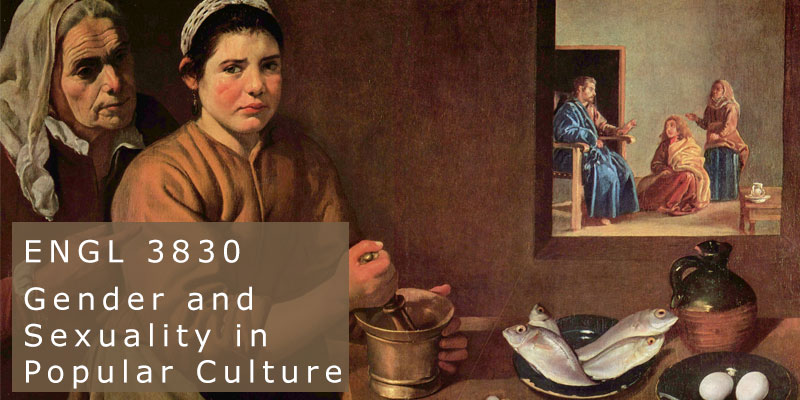Catalog Description: Prerequisites: Completion of Blocks A and B4, an additional course from Block B, and at least one course each from Blocks C and D. Survey and critical analysis of narrative and visual representations of gender and sexuality in the modes of popular culture, such as television, film, advertising, popular fiction, and the tabloid press. UD GE C (d)
Course Description: The course examines the cultural history, perceptions, stereotypes, debates, and challenges of gender and sexuality in the production, aesthetics, and reception dynamics which govern the industries of popular print and visual culture and which inform the symbolic and material interrelationships among their respective mass consumer products. Such industries of popular culture include television (e.g., commercials, situation comedies, news, court TV, reality-TV, soap operas/telenovelas, home shopping channels, music video, infomercials, sports, children's TV: action drama, science fiction, talk shows, etc.), film genres (e.g., action, comedy, family, animation, gangster, horror, melodrama, science fiction, etc.), popular fiction (such as detective and gothic romance), advertising (e.g.. the fashion, fitness, health, automotive, and recreation culture industries), and the tabloid press. Through critical examinations across the spectrum of such popular culture industries, forms, styles, themes, and messages, the topics of this course will include the representational developments of themes and images of "femininity" and "masculinity," the class-, ethnic-, and age-based economics of gender and sexuality in the target marketing of popular culture, feminist challenges and contributions to popular culture, complexities of class and ethnicity in popular culture in relation to sex and gender, international perspectives on gender and sexuality in popular culture, and the historical significance of lesbian, gay and transgender popular culture images and themes.
Learning Outcomes
Upon completion of this course, students will be able to:
- Demonstrate the ability to think, talk and write critically about popular culture, including television, film, music, digital materials, and print advertisements
- Demonstrate understanding of the role popular culture plays in constructing gender and sexual identities
- Demonstrate mastery of the basic critical vocabulary of cultural studies, particularly as it pertains to representations of sex, gender, and sexuality
- Demonstrate understanding that a text’s meaning extends beyond the text itself to include its producers, receivers, and cultural contexts
- Demonstrate understanding of gender and sexual diversity and its interaction with race, class, ethnicity, and belief
- Interpret texts using an inter-disciplinary perspective
- Demonstrate familiarity with medium-specific critical vocabularies
Course Outline
- Popular Culture - Representational Technologies of Gender and Sexual Construction
- Between Free Speech and Censorship - The Political Economy of Gender and Sexuality in Popular Culture
- Techniques, Codes, and Conventions of Gender and Sexual Representations in Popular Culture
- Imagineering Women and Men in the Cultural Mainstream
- "Teach Your Children Well" — Selling Gender in Popular Culture to Youth Markets
- Consumer Demographics and the Lowest Common Denominator — Class Politics in Gendered Marketing of Popular Culture
- Re(Per)forming "Femininity" and "Masculinity" in the Margins of Popular Culture
- Feminist Contributions to Popular Culture
- The Gender and Sexual Politics of Ethnicity in Popular Culture
- From Revolting "Queers" to Queers Revolting - Contributions of the Lesbian, Gay, and Transgender Movement to(ward) Popular (Multi)Culture
About the Banner: Diego Velázquez, Christ in the House of Martha and Mary (1618) (image from http://en.wikipedia.org/wiki/Martha#/media/File:Diego_Vel%C3%A1zquez_008.jpg)
